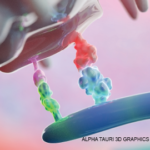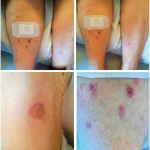SAN DIEGO—The inflammatory myopathies are a heterogeneous group of conditions that, although discovered decades ago, continue to challenge rheumatologists in terms of their myriad clinical presentations. In Flexing Strong Science on Weak Muscles: Genetics, Genomics and Autoantibodies in Myositis, two speakers provided exceptionally helpful insights into these conditions, using novel tools for analysis.
6 Types
The first speaker was Andrew Mammen, MD, PhD, senior investigator and chief, Muscle Disease Section, National Institute of Arthritis and Musculoskeletal and Skin Disease, National Institutes of Health, Bethesda, Md. Dr. Mammen began by describing the six identifiable types of myositis.
Inclusion body myositis (IBM) is known for its unique features, such as weakness in the distal finger flexors and a muscle biopsy that may show inflammatory cells surrounding and invading non-necrotic muscle fibers, rimmed vacuoles, protein aggregates and congophilic inclusions. However, Dr. Mammen noted that these classic findings on muscle biopsy may not be present in a sizable number of patients and, thus, the absence of these findings should not rule out the diagnosis.
Dermatomyositis (DM) is classically associated with perifascicular damage on muscle biopsy, and there now exist many identifiable myositis-specific autoantibodies that can be identified, each with its own characteristic clinical phenotype.
The muscle biopsies in patients with anti-synthetase syndrome (AS) are hard to distinguish from those of patients with DM, but a key feature of patients with this condition may include significant interstitial lung disease and particular cutaneous findings, like mechanic’s hands.
Muscle biopsies in patients with immune mediated necrotizing myopathies (IMNM) will show myofiber necrosis, and the autoantibodies that track with this condition are those directed against signal recognition particle (SRP) and hydroxymethylglutaryl CoA reductase (HMGCR).
There are overlap forms of myositis, in which patients may have features of conditions, such as systemic lupus erythematosus, systemic sclerosis and rheumatoid arthritis, and muscle biopsies in these patients are variable. Finally, it has been noted that certain patients exposed to immune checkpoint inhibitors (ICI) for treatment of malignancies, such as lung cancer or melanoma, may develop a form of myositis as an adverse effect of these medications.
Research Questions
Dr. Mammen went on to describe the work of his research team in easy-to-understand terms: chunks of muscle biopsy tissue are collected (from patients both with and without myositis), RNA is extracted from this tissue, and a genetic library is prepared. RNA sequencing is performed and produces an expression level of every identifiable gene. Dr. Mammen asked several questions in his lecture and was able to provide answers based on his research findings.



